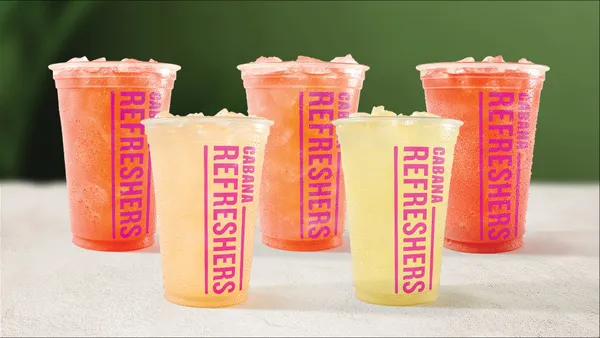Dive Brief:
- Starbucks will set annual goals based on retention rates and progress toward achieving representation of at least 30% for Black, indigenous and people of color at all corporate levels and at least 40% at retail and manufacturing roles by 2025, according to a company post. Pay for senior vice president level and above will be linked in part to diversity metrics, according to The Wall Street Journal.
- The company is working on completing a rollout of an analytics tool to provide leaders with transparency over current diversity representation related to its goals, and plans to share progress toward its goals annually.
- Starbucks’ move is part of a broader strategy across the top QSRs, including McDonald’s and Yum Brands, which have increasingly focused on improving diversity from the top down. McDonald’s rolled out a gender diversity initiative in March 2019 while Yum is investing $100 million toward its global Unlocking Opportunity Initiative over the next five years alongside its plans to increase racial and gender diversity.
Dive Insight:
Starbucks has long developed initiatives to improve diversity, including closing gender pay gaps in 2018 in the U.S., but tying executive pay to achieving these new goals offer more accountability to the many public commitments companies have made as the country wrestles with issues of systemic racism.
In the past the coffee giant has received high marks for its commitment to civil rights, equity and inclusion efforts in 2019 and hired a global chief inclusion and diversity officer in November last year.
The company still has a ways to go in terms of diversity, however, especially at the corporate level. Its corporate staff is made up of largely White employees (65.2%), while Black employees make up 3.7%, Asian employees represent 19.2% and Latinx employees make up 7.4% as of Aug. 23, according to company data.
Its efforts also have been marred by some negative public incidents. A Philadelphia store employee called the police on two Black customers who were waiting to make a purchase until their friend arrived at the store, which resulted in the retailer closing its 8,000 stores for diversity and inclusion training. Starbucks also reversed a store policy that initially did not allow store employees to wear clothing and accessories to support the Black Lives Matter movement after facing backlash during the summer.
Starbucks’ latest initiative follows its civil rights assessment, which began in 2019 to better assess its current initiatives and commitment to civil rights, equity, diversity and inclusion and feedback from partners, senior leaders, community organizations and civic leaders led to several recommendations. Since then, the company has opened over a dozen community stores in underserved neighborhoods, updated store trainings to address disruptive behavior and committed to roll out enhanced applicant tracking in 2020 to create more diverse teams, among other efforts.
Starbucks also announced plans for mentorship for Black partners, Indigenous partners and partners of color; requiring all vice presidents and above to complete two hours of anti-bias training; embedding anti-bias content within its hiring, development and performance assessment tools; and investing in additional partner network development and recognition programs such as an Inclusion and Diversity and Virtual Leadership summit during its Q2 fiscal year 2021.
While focusing on diversity helps a brand’s halo, it also can result in a more profitable company, helps drive innovation, can improve employee retention, and improve productivity, among other benefits.













